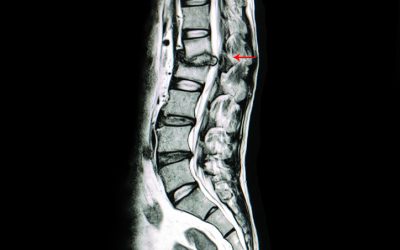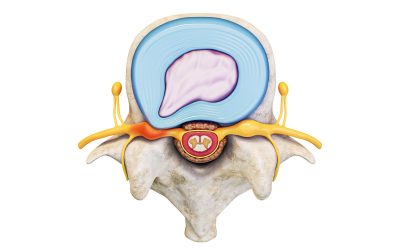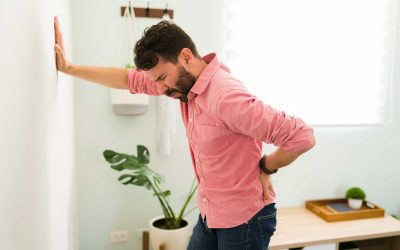Neck & Back Physical Therapy
Back and neck pain are very common.
Neck & Back Physical Therapy
Back and neck pain are very common. In fact, injuries to the spine are the most common conditions that we treat. Do not let back problems limit your lifestyle. Most of these problems respond well to the right kind of treatment.
Common Causes of Neck & Back Pain
Disc Herniation
Herniated, bulging, compressed, ruptured, slipped. These are the many names for this condition caused by worn-down, degenerated vertebral cushioning. This naturally occurs when the cushioning between vertebral discs leaks out and irritates nerves.
Common Causes of Disc Herniation:
- Age-related wear and tear
- Repetitive, spine-stressing activity (especially lifting, bending, twisting)
- Smoking, excess weight and sedentary lifestyle
- Sudden injury
Common Signs and Symptoms of Disc Herniation:
- Numbness and tingling (often radiating into the upper or lower extremities)
- Pain (local and often radiating into the upper or lower extremities)
- Weakness
- Stiffness
Degenerative Disc Disease
Degenerative disc disease is when the cushiony discs between the vertebrae of the spine deteriorate. Without cushioning, the spine experiences additional pressure, causing mild, moderate or severe pain.
Common Causes of Degenerative Disc Disease:
- Aging
- Genetics/heredity
- Injury
- Obesity
- Smoking
- Trauma
Common Signs and Symptoms of Degenerative Disc Disease:
- Weakness in either the upper or lower extremities
- Numbness / tingling
- Pain
- Especially low back, buttocks, thighs, neck, and upper extremities
- Worsens with sitting, bending, lifting, twisting
- Improves with walking, changing positions, lying down
Sciatica
Sudden, sometimes debilitating pain that starts in the low back and radiates down the leg is a telltale sign of sciatica. Sciatica is a condition in which the nerve that runs from the lower back, through the buttocks and down the leg becomes inflamed or irritated.
Common Causes of Sciatica:
- Arthritis
- Herniated disc
- Fracture
- Injury
- Spinal Stenosis
- Spondylolisthesis
Common Signs and Symptoms of Sciatica:
- Numbness and tingling (often radiating into the upper or lower extremities)
- Pain (local and often radiating into the upper or lower extremities)
- Weakness
- Stiffness
Sacroiliac (SI) Joint Dysfunction
Regional aching and pain in the area between the spine and the buttock can be due to sacroiliac joint inflammation. Often localized to one side of the spine, this form of back pain is often the result of misalignment and instability.
Common Causes of SI Joint Dysfunction:
- Pregnancy
- Trauma
- Leg length discrepancy
- Gait abnormality
Common Signs and Symptoms of SI Joint Dysfunction:
- One sided pain in the region between the low back and buttock
- Tenderness to the region of pelvis below the lower back
- Aching
- Stiffness
Spinal Stenosis
This condition causes a narrowing of the spine one of three places: the center space, the nerve branch canals or the space between the bones of the spine. This narrowing puts pressure on the spinal cord and nerves, causing a great deal of pain.
Common Causes of Spinal Stenosis:
- Aging
- Arthritis
- Genetics
- Injuries
- Scoliosis
- Tumors
Common Signs and Symptoms of Spinal Stenosis:
- Cramping
- Numbness
- Pain (especially neck, back and radiating down leg)
- Weakness
Spondylolysis
When teen or adolescent athletes complain of low back pain, the culprit could be a tiny crack or stress fracture in one of the vertebrae. This condition, called spondylolysis and generally improves with rest and rehabilitation.
Common Causes of Spondylolysis:
- Genetics/heredity
- Repetitive bending and straightening
- Sports injuries (especially football, diving, gymnastics)
Common Signs and Symptoms of Spondylolysis:
- At times, no obvious symptoms.
- Feeling of strained muscle
- Low back pain ranging from sharp to dull ache
- Pain aggravated by bending and straightening
Spondylosis
This degenerative disorder may range from mild to severe, causing little (or much) disruption to daily activity. It affects the neck (cervical), mid-back (thoracic) and low-back (lumbar) spinal regions, and possibly discs and facet joints.
Common Causes of Spondylosis:
- Age
- Bone spurs
- Disc dehydration
- Herniated discs
Common Signs and Symptoms of Spondylosis:
- Numbness
- Pain
- Weakness
Scoliosis
Having an “S” or “C” curve in the back is one apparent symptom of a medical condition called scoliosis. This abnormal curvature of the spine can affect anyone at any age, although it is more prevalent in girls than boys.
Common Causes of Scoliosis:
- Unknown, possibly hereditary
- Often more pronounced with age especially in women
- May be secondary to other neuromuscular conditions:
- Cerebral palsy
- Muscular dystrophy
- Spina bifida
Common Signs and Symptoms of Scoliosis:
- Asymmetrical, elevated hip
- Distinct sideways lean
- Noticeable hump
- Protruding, asymmetrical shoulder blades
- Uneven shoulder or waist line
Whiplash
Although people may joke about this condition in response to a mild injury, whiplash is a real condition. It occurs when soft tissues of the neck are strained or sprained, usually as a result of sudden forward or backward motion.
Common Causes of Whiplash:
- Motor vehicle accidents (especially rear-end collision)
- Acute injury (falls or sudden force to the head or neck)
Common Signs and Symptoms of Whiplash:
- Pain
Spine Treatment Plans
Injuries involving the spine can be difficult to accurately diagnose and properly treat. Several different disorders can result in similar complaints and but have dramatically different treatment protocols. What’s more is that many people who happen to suffer from the identical disorder often have different exercises depending on their own individual areas of tightness, weakness, as well as a variety of other impairments. Your therapist will develop an individualized treatment plan based on an hour long history and physical examination. There are several treatment approaches to choose from. Your therapist will identify the approach that is best suited to treat your specific disorder and guide you as you progress through the program. You can read about a few of these approaches below.
The McKenzie Method
This is consistently one of the most proven methods of evaluating and treating acute pain, stiffness, numbness / tingling, and weakness originating in the spine. It is an approach that evaluates how repeatedly performed spinal movements and sustained postures effect symptoms. The information allows the therapist to arrive at an accurate diagnosis, prognosis, and treatment plan. Here patients perform exercises that are often complimented by manual (hands-on) treatments to resolve their disorder and prevent reoccurrence.
Core Stabilization
Many also know this as core strengthening. The “core” muscles of your trunk and hips provide a bracing effect to the spine. When functioning properly, these muscles help to keep your spine stable while you move. This reduces the stress placed upon the spine thereby lessening pain, stiffness, and symptoms of nerve compression. When the core muscle are weak and not functioning properly sudden movements or lifting heavy objects can cause serious injury. Once pain is under control, core stabilization is what helps you to get back to activity and prevents future injury.
The Maitland Method
The Maitland method is based on a continuous evaluation and assessment of applied hands-on techniques and movements. In the case of spinal pain, specific techniques are applied to the spine to identify problem areas and direct treatment. Patient education is an important part of this treatment approach.
The Mulligan Concept
This is a treatment approach utilized when muscle spasms, imbalances in strength / flexibility, or joint damage result in joint misalignment. Here pressure is applied to the spine to achieve better alignment while the patient actively stretches and performs resisted movements while in pain free positions. This is commonly coupled with core strength training to ensure that normal alignment is maintained.
Spinal Manipulation
With this treatment a therapist applies a small, but quick, movement to a spinal segment to improve alignment and restore mobility. Patients often associate a “pop” with this treatment. This is a fundamental tool of the chiropractic profession.
Spinal Traction
Also known as Spinal Decompression. This is a treatment where a clinician or device applies a decompression between 2 vertebra. This reduction in pressure can help to reduce pain, swelling, and inflammation from the discs and joints of the spine as well as to relieve compression upon the nerves exiting the spine.
I Have a “Slipped Disc”. What is a Disc Herniation?
MRI scan of lumbar spines of a patient with kyphosis and back pain showing spondylodiscitis at L1, L2 levels, bulging of L3, L4 disc and spinal cannal stenosis. Diagnosis TB spines. Slipped Disc. What You Must Know A herniated disc, also known as the slipped disc is a...
Physical Therapy Treatment Options for Several Neck Disorders
A neck injury has the potential to cause neck pain, back pain, headache, shoulder pain or damage other body parts. This is because your neck is interconnected to joints, bones, soft tissue, muscles, ligaments and nerves in the cervical spine all working together to...
Symptoms and Treatment of Back Pain
Superior view of human lumbar vertebra with herniated disk and spinal cord isolated on white background with copy space 3D rendering illustration. Anatomy, medical, backbone pathology concepts. Back pain is a prevalent issue experienced by individuals across all age...
Physical Therapy and other Treatment Options for Degenerative Disc Disease
Degenerative disc disease treatment is almost always non-operative. While the condition is not reversible, it can be treated successfully with interventions such as carefully selected core strength training and stretching exercises. Time, rest,...
Whiplash – Diagnosis and Treatment
Whiplash is an injury that occurs on the neck for a variety of reasons which include moving the neck back and forth rapidly during an accident, trauma, or physical abuse. It presents itself in symptoms such as headaches, stiffness, and pain. It is possible to treat...
Diagnosis of Osteoporosis and the role that PT Plays in its Treatment
Osteoporosis is a disease where the bones have very little density. It is a condition where either the bone is degenerating too quickly or is the result of not being capable of replenishing itself at an appropriate rate. In some cases both conditions can be present. ...
Scoliosis Diagnosis and Treatment
Let's start by understanding what exactly your doctor means when he says you are suffering from scoliosis. It is simply an abnormal side-to-side curvature on the spine. It is common to develop scoliosis just before puberty but can develop in adolescence as well. It...
Common Treatments for Headaches in Physical Therapy
There are different types of headaches, with as many being caused by a varying range of conditions. In many cases these pains derive from issues with muscles and joints of the neck. While medication may help to relieve the symptoms, often the underlying cause of...
What To Look For in a Physical Therapist
Physical therapists treat people with a wide variety of injuries and illnesses. Some treat people with neurologic injuries from events such as a stroke or heat trauma while others treat musculoskelatal conditions that may be causing you a great deal of discomfort and...
Understanding The Common Back Injuries
Back pain is common and has had severe effects on many people worldwide. The pain can range from a mild, moderate, to severe or acute pain. The aches leave the victims unable to do some things without struggles such as carrying objects, sitting, walking, and at times,...




